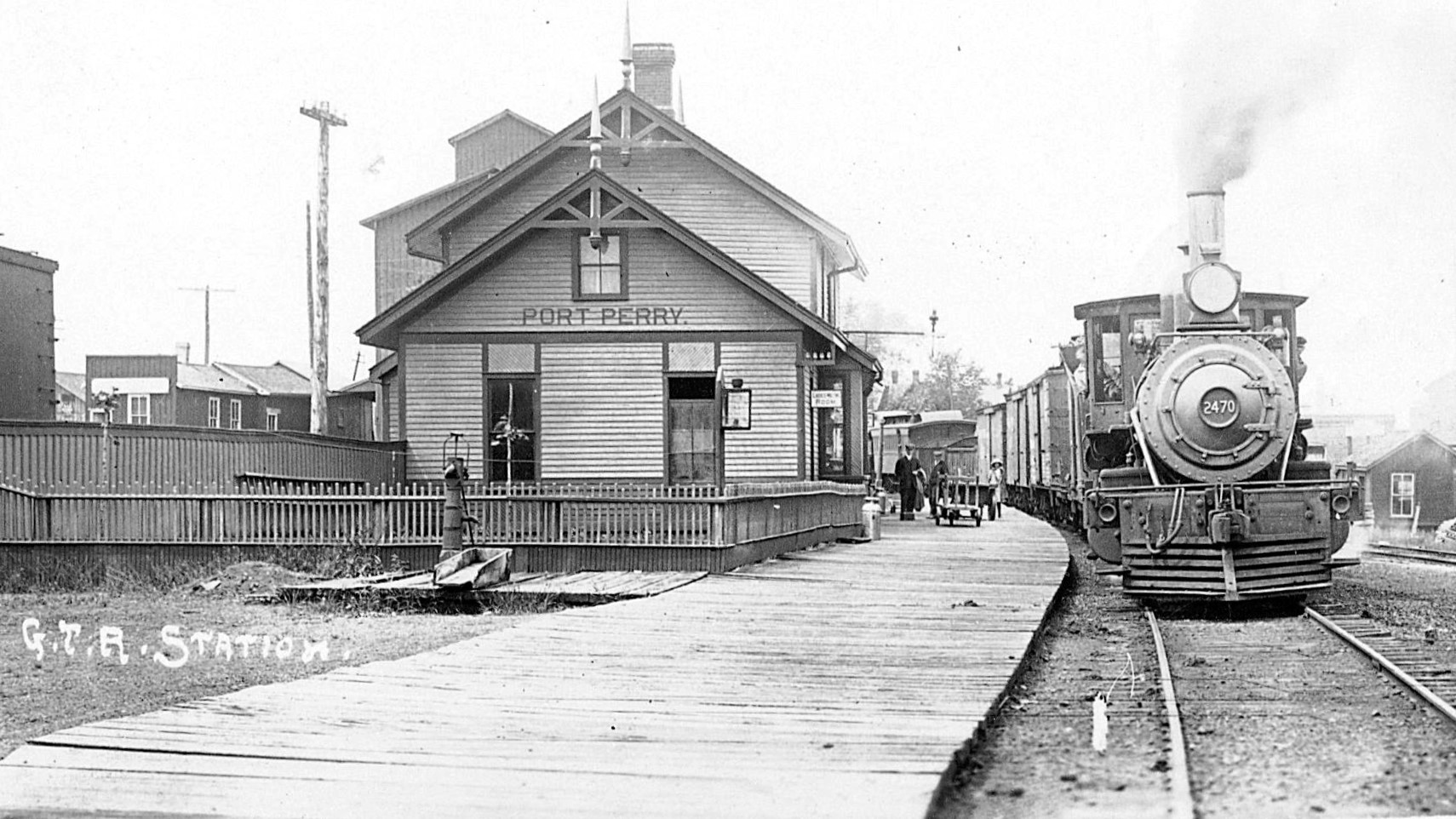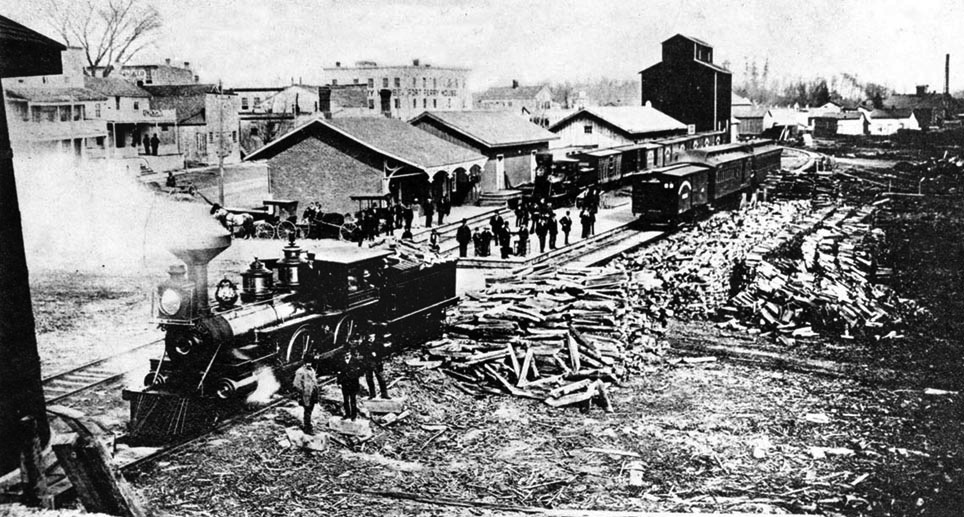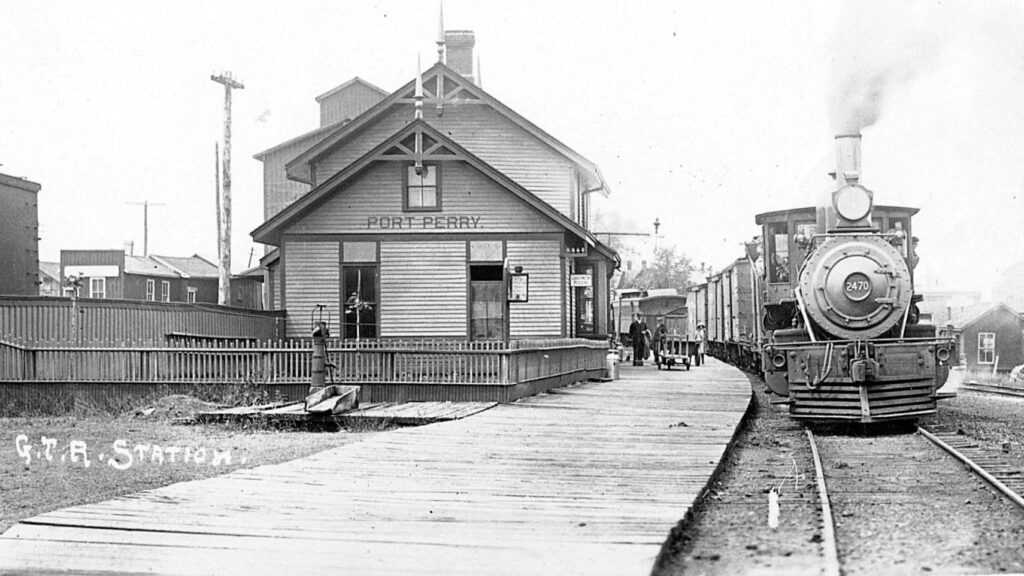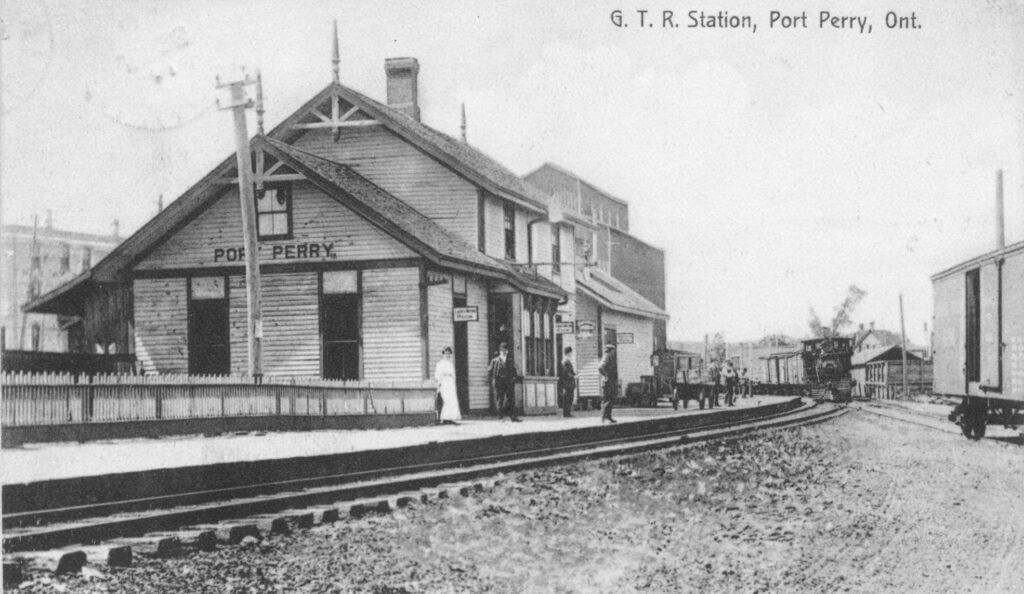Summary
The first train station in Port Perry was built by the Port Whitby and Port Perry Railway in 1871, and the first train arrived on November 23rd of the same year. It was a small rectangular structure with a pitched “lean-to” roof, providing minimal shelter for passengers on the platform below. Adjacent railway buildings nearby included one or two freight sheds and a grain elevator to serve local farms. Initially the rails ended in Port Perry, but an extension to Lindsay was opened in 1877. The railway’s name was subsequently changed to the Whitby, Port Perry & Lindsay Railway. Despite its best efforts, the railway failed to make significant profits and it soon sought to merge with several other nearby branch lines. The Midland Railway of Canada gained control of it in 1882, though this arrangement would be short lived. The much larger Grand Trunk Railway leased the Midland Railway starting January 1st, 1884, and by 1886 a total of six trains stopped in Port Perry on a daily basis.
Work began on a new station building at Port Perry in August 1888 which included shifting the rail line 25 feet to the east, and it was opened to passengers a year later in June 1889. The new station was a two-storey wood frame building, containing the station agent’s living quarters in the upstairs and the rest of the necessary facilities in the lower floor. After the turn of the 20th century, the Grand Trunk began encountering financial difficulties that culminated in its nationalization and subsequent merger into Canadian National in 1923. The popularization of automobiles combined with the economic effects of the Great Depression resulted in a significant decline of passenger ridership country-wide. Unprofitable branch lines like the former PW&PP were some of the first to go, and passenger service to Port Perry ended in 1937. The rails remained in place for some time, until the very last train left in 1939 to bring passengers to Toronto for the arrival of the royal family. The beginning of World War Two just a few months later necessitated an increased production of steel, and the rails were lifted soon after to be melted down for the war effort.
The station building was sold and moved to the opposite side of Water Street where it was heavily modified over the years. It has changed hands multiple times and is now a commercial property. The railway grain elevator remained in its original location where it was restored, and it is believed to be the oldest of its kind in Canada.
Condensed Station Info:
| Location: | Served By: | Current State: | Date Built: | Date Demolished: |
| North Street and Old Rail Lane | PW&PP (1871 – 1882) MRC (1882 – 1884) GTR (1884 – 1923) CNR (1923 – 1939) | Demolished (First) Repurposed (Second) | 1871 (First) 1889 (Second) | 1889 (First) N/A (Second) |





